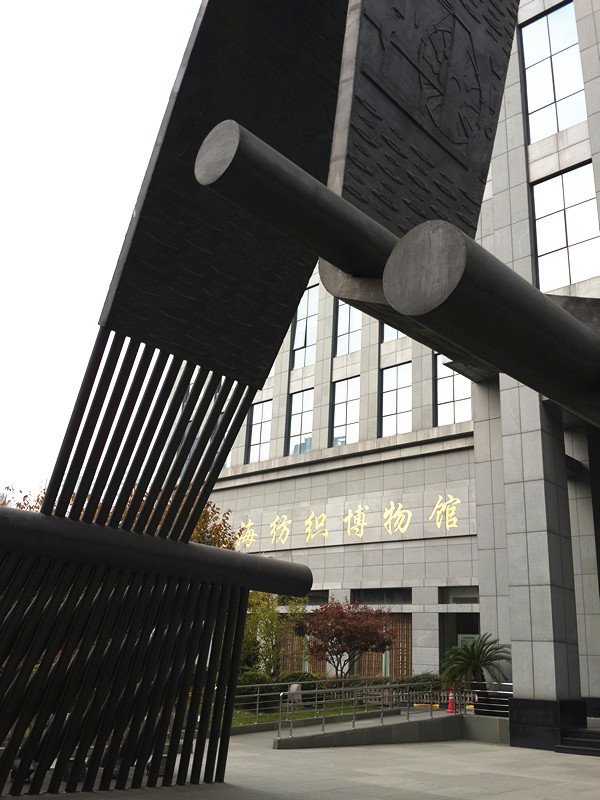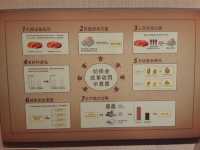The original site of Shenxinjiu Factory, built a quite quality Shanghai Textile Museum, as a member of Shanghai Textiles, very interested to see the end from the beginning, not only to understand the history of the development of the textile industry in Shanghai, but also to lament the historical context of the development of the textile industry. Seeing those familiar scenes and familiar characters and hush, 25 cotton Hu Xiaoping later became a singer, where is it now? Remember to work in the workshop where she worked, and then the secretary of the group committee of the textile machinery system Wang Shuguan, seeing the photos, thinking of how many past events!
;
Textilmuseum St. Gallen Review
4.6 /58 Reviews
Popular Destinations
Türkiye Travel | Gutian Travel | Ormoc Travel | Cooktown Travel | Phu Quoc Island Travel | Hanoi Travel | Kathmandu Travel | Province of Bali Travel | Queenstown Travel | Koh Larn Travel | Orange Travel | Lauterbrunnen Travel | Yogyakarta Travel | Pennsylvania Travel | Sharm El Sheikh Travel | Venice Travel | Imphal Travel | Blois Travel | Jingzhou Travel | Bacoor Travel | Yabuli Ski Resort Travel | Cornelius Travel | Stewart Township Travel | Easter Island Travel | Yizhou District Travel | Grodno Region Travel
Recommended Attractions at Popular Destinations
Bangkok attraction near me | Tokyo attraction near me | Manila attraction near me | Hong Kong attraction near me | Taipei attraction near me | Seoul attraction near me | Los Angeles attraction near me | New York attraction near me | Shanghai attraction near me | Kuala Lumpur attraction near me | Shenzhen attraction near me | Osaka attraction near me | Singapore attraction near me | Guangzhou attraction near me | London attraction near me | San Francisco attraction near me | Beijing attraction near me | Macau attraction near me | Bali attraction near me | Paris attraction near me | Ho Chi Minh City attraction near me | Orlando attraction near me | Jakarta attraction near me | Phuket attraction near me | Chicago attraction near me | Toronto attraction near me | Istanbul attraction near me | Cebu attraction near me | Dallas attraction near me | Seattle attraction near me
Popular Attractions
WhiteWater World | Petronas Twin Towers | Gyeongbokgung Palace | Australian Reptile Park | Universal Studios Japan | Melbourne Skydeck | Gold Coast Sea World | Warner Bros. Studio Tour London | Wat Arun Ratchawararam Ratchawaramahawihan | Universal Beijing Resort | Jade Dragon Snow Mountain | Sovereign Hill | Moreton Island | Genting SkyWorlds Theme Park | The Temple of the Emerald Buddha | 12 Apostles Air Adventures | Chinatown | Erhai Lake | Adventure World | Grace Assembly PJ | Kayu manis barat | Platja Perales | Centennial Park Tobogganing Hill | Džamija Polje | Ramaguda Reservoir | Tennis Canterbury at Wilding Park | Gopi Krishna Sagar dam ruthiyai | Sportplatz | Ciclabile Villoresi Masate Pessano | Sri Venkateswara Temple(SVT Sydney)
Popular Travelogues
Bangkok Travelogue | Tokyo Travelogue | Hong Kong Travelogue | Seoul Travelogue | Los Angeles Travelogue | New York Travelogue | Shanghai Travelogue | Kuala Lumpur Travelogue | Shenzhen Travelogue | Osaka Travelogue | Singapore Travelogue | London Travelogue | Beijing Travelogue | Macau Travelogue | Bali Travelogue | Paris Travelogue | Phuket Travelogue | Toronto Travelogue
Payment Methods
Our Partners
Copyright © 2024 Trip.com Travel Singapore Pte. Ltd. All rights reserved
Site Operator: Trip.com Travel Singapore Pte. Ltd.
Site Operator: Trip.com Travel Singapore Pte. Ltd.
















